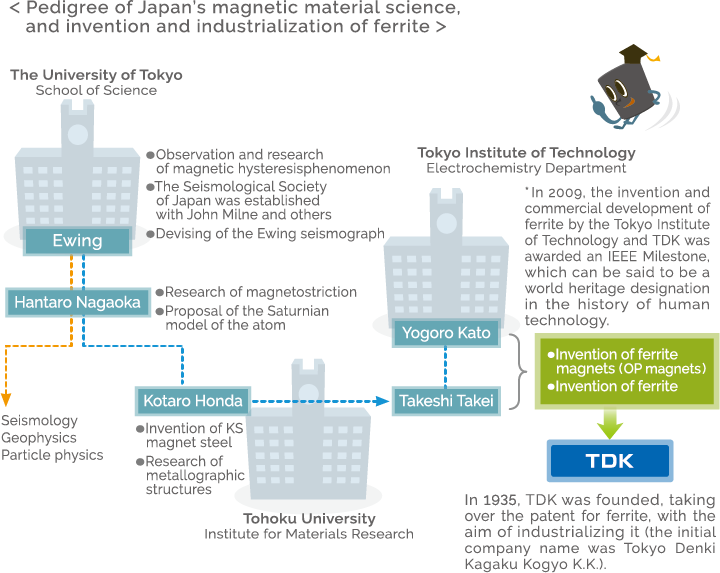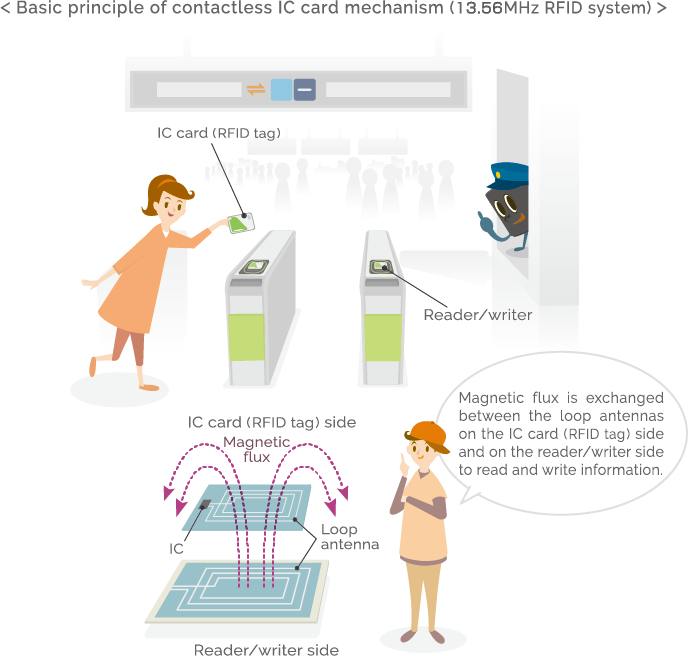Ferrite World
Vol. 6 Ferrite that has helped the development of magnetic recording

The magnetic head is a key part of magnetic recording equipment
When a direct current from a dry-cell battery is applied to the iron core wound with a coil, the iron core becomes an electromagnet and attracts the iron nail. When the current is cut off, the iron nail is removed from the iron core, but retains a small amount of magnetism and becomes a weak permanent magnet. When the iron core coil is run along a steel wire instead of the iron nail with an AC current applied to the coil, a pattern of magnetization reversal by the AC current is left on the steel wire. This principle was used in the magnetic wire recorder (Telegraphone) invented by Valdemar Poulsen in 1898. While the cylinder wound with steel wire is rotating, the head (soft iron core wound with a coil) is run along the steel wire to record audio signal currents from the microphone onto the steel wire as a magnetization pattern. The principle of reproduction is electromagnetic induction. When the head is run along the steel wire, electromotive force is produced in the coil of the head, causing currents to flow, according to changes in the magnetization pattern recorded on the steel wire. These currents vibrate the diaphragm of the loudspeaker (with a microphone) to reproduce audio sound.
A tape recorder uses tape to which magnetic powder is applied, instead of steel wire, as the recording media. The world’s first practical machine was produced in the 1930s in Germany and was used for radio broadcasts, etc. Until then, equipment was used that amplified audio vibrations and mechanically engraved grooves on a disk record. The so-called “Jewel Voice Broadcast” by the Japanese Emperor at the end of the Second World War (in 1945) was also recorded by such system.
Japan’s first tape recorder was produced by Sony in 1950. Recording tape started to be produced by TDK and other manufacturers and NHK (Japan Broadcasting Corporation) started to use it for on-the-street recording, etc. In the beginning of the 1960s, cassette recorders and radio-cassette players emerged, and tape recorders became popularized. In the 1970s, videotape recorders (VTRs) also emerged, which could record not only audio signals but also video signals onto magnetic tape. VTRs, which were originally designed for broadcasting stations, were made into home-use small devices by Japanese electronic manufacturers’ technologies.
Ferrite was widely used as core material for magnetic heads of tape recorders and VTRs. Materials for magnetic heads need to have low loss and good magnetic properties, and also to have abrasion resistance as they are run along the surfaces of tape for recording and reproduction. Ferrite, which is a magnetic ceramic, is superior in both magnetic properties and abrasion resistance, so it is suitable as head material. However, ferrite has lower saturation magnetic flux density than metallic soft magnetic materials. Thus, hybrid magnetic heads were also developed in which metallic magnetic film (e.g., Sendust) is placed near the gap. These are called MIG (metal-in-gap) heads.
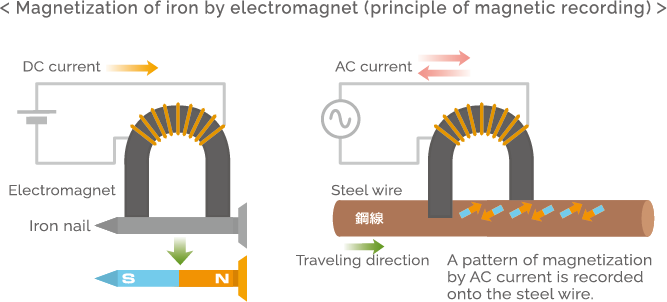
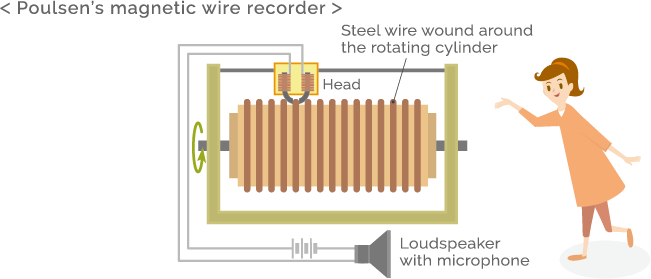
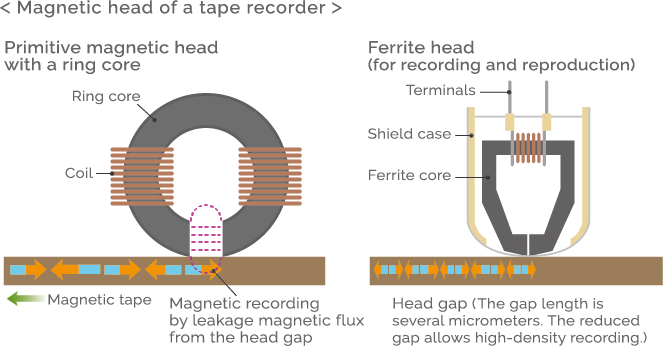
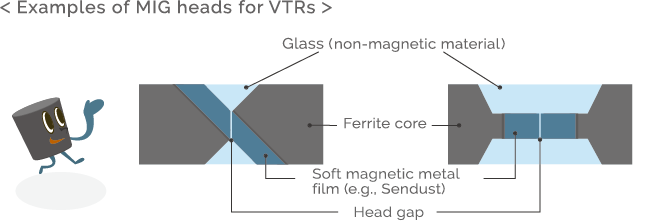
TDK’s Avilyn magnetic material brought innovation to magnetic tape
Technology for magnetic tape, which is a recording medium, along with magnetic head technology, has driven the development of magnetic recording.
Magnetic tape is a medium in which needle-shaped magnetic powder is applied to the base film. This magnetic powder is magnetized by the magnetic flux from the head and numerous minute magnets form a magnetization pattern to record information. It is shaped like needles in order to prevent magnetization from weakening. In the magnets, a diamagnetic field acts to reduce their magnetism, but the long and thin shape can reduce the effects of the diamagnetic field. This is also the reason why iron bar magnets have a long and thin shape.
Maghemite, an iron oxide (γ-Fe2O3, also referred to as gamma hematite), is mainly used as the magnetic powder for magnetic tape. Maghemite is a component of lodestone and has the same crystal structure as ferrite. However, a maghemite crystal is granular. Needle-shaped maghemite, therefore, is synthesized by a very ingenious chemical process.
There is a mineral called goethite, which was named after a literary giant Johann Wolfgang von Goethe (he was a collector of minerals). Goethite is an iron hydroxide (α-FeOOH) and is not a magnetic material but forms needle-like crystals. While the original outer shapes of these needle-like crystals are utilized, the composition is changed by reactions, such as oxidation and reduction, to turn iron hydroxide into maghemite. In a simple term, iron hydroxide is first made into red rust (α-Fe2O3), and this is then changed to black rust (Fe3O4) and is finally oxidized. This series of processes changes the composition to magnetic powder called maghemite (γ-Fe2O3) while maintaining the appearance of original needle-shaped crystals.
The Avilyn magnetic material developed by TDK brought great innovation to magnetic tape. It is already known that mixing maghemite magnetic powder with cobalt increases coercivity, but there was the problem that simply mixing them cannot provide stable properties. In 1973, TDK succeeded in dramatically improving the properties of magnetic tape by establishing a new technology to deposit cobalt onto the surfaces of needle-shaped magnetic powder. In this way, the use of the Avilyn material made it possible to enjoy very high-quality sound on cassette tapes that were until then not satisfactory for music recording. In 1979, Walkman emerged, which was a hot-selling product that greatly changed people’s music listening habits, and the good properties of TDK’s cassette tapes became widely recognized around the world.
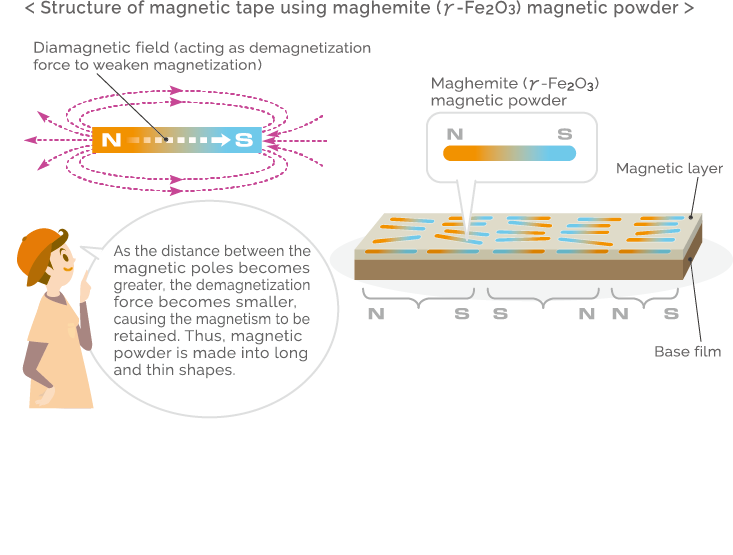
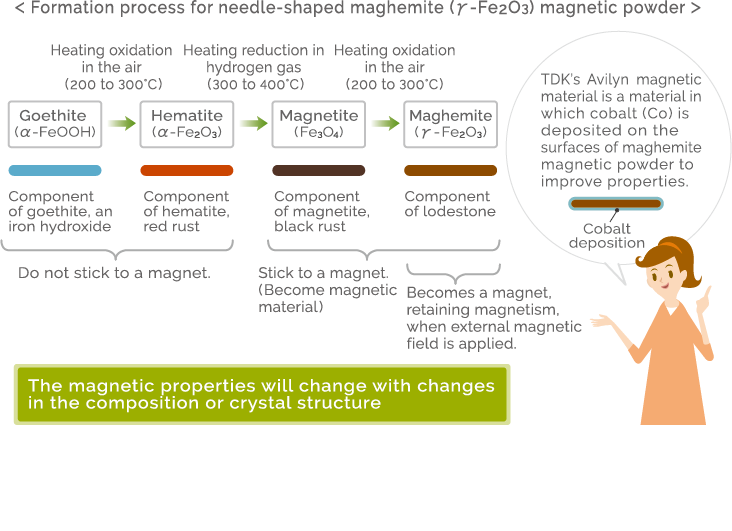
Ferrite has the properties necessary for magnetic tape in a balanced proportion
The properties of hard and soft magnetic materials were adequately used in magnetic recording with tape recorders and VTRs. The ferrite used in a magnetic head is a soft magnetic material, and becomes a magnet temporarily to magnetize magnetic powder on the magnetic tape only when current flows through the coil. Meanwhile, the magnetic powder applied to the magnetic tape is a hard magnetic material with a certain degree of coercivity because it is magnetized by the magnetic head to record and store information. However, it does not have as high coercivity as permanent magnets, so it is also referred to as a semi-hard magnetic material (maghemite magnetic powder is a semi-hard magnetic ferrite).
A graphical illustration of the magnetization process of magnetic material is called a hysteresis loop (hysteresis curve, or B-H curve). As currents passed through the coil are increased to strengthen the magnetic field from the coil, the magnetism of the magnetic material will increase and will finally reach saturation. As the direction of currents is gradually reversed, the magnetism of the magnetic material will weaken, and the magnetic poles will finally reverse, resulting in saturation. If this process is graphed, a narrow S-shaped loop is drawn for soft magnetic material, and a wide S-shaped loop is drawn for hard magnetic material.
A steeper upslope of a S-shaped loop indicates more sensitive magnetization by an external magnetic field (higher magnetic permeability), and a vertically longer S-shaped loop indicates a stronger electromagnetic effect (higher saturation magnetic flux density). Also, in this magnetization reversal process, energy equivalent to the area of the S-shaped loop is consumed as heat. This is called hysteresis loss. Thus, the magnetic materials for magnetic heads need to have as high magnetic permeability, high saturation magnetic flux density, and low hysteresis loss as possible.
There are various types of soft magnetic materials, and their respective advantages are utilized in head cores. For example, some high-end cassette decks have used a metal Sendust head suitable for metal tape (high magnetic permeability and high saturation magnetic flux density). However, ferrite heads have mainly been used as magnetic heads for cassette decks, VTRs, FDDs (floppy disk drives), etc. This is because ferrite has good abrasion resistance and high electrical resistance and, therefore, has such advantages as low eddy current loss at high frequencies unlike metal cores, although it is inferior in saturation magnetic flux density to metal cores.
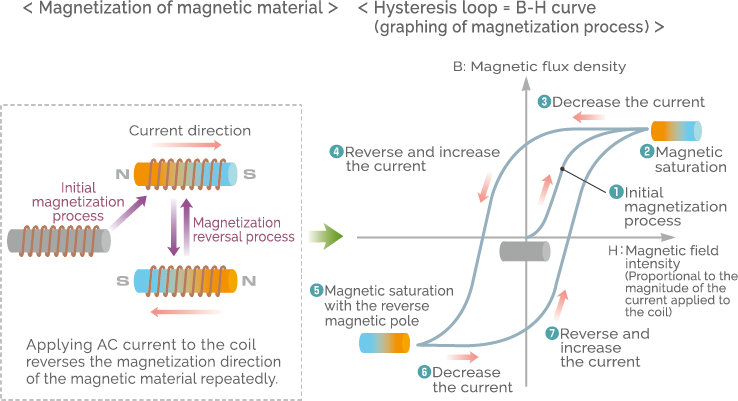
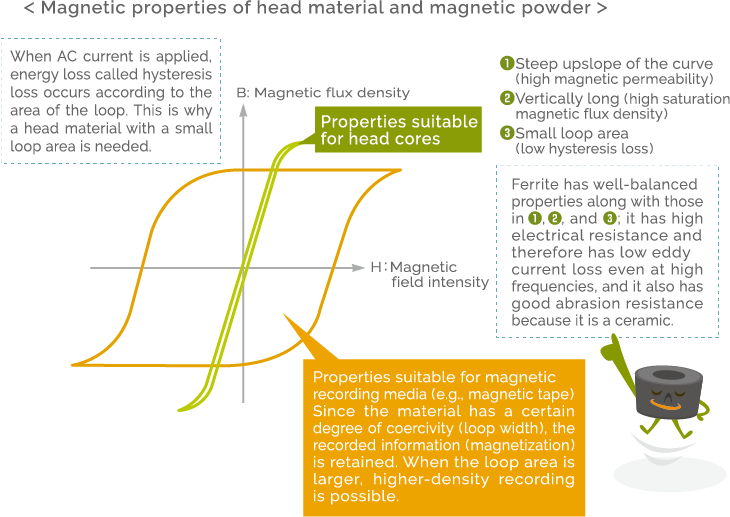
TDK is a comprehensive electronic components manufacturer leading the world in magnetic technology



